8 Sasaki projects shortlisted in the 2023 The PLAN Awards
Projects were recognized in the Education, Landscape, Public Space, and Urban Planning categories
 Sasaki
Sasaki
A new campus with immersive ecology
For two millennia, waterways and canals have served as the lifeblood for the region of Ningbo, China, providing not only essential transportation and commerce but also shaping daily life and urban landscapes. Drawing inspiration from the city’s rich cultural heritage and its enduring relationship with water, Sasaki’s master plan for the Eastern Institute of Technology’s campus incorporates an intricate waterway system to create a multifaceted waterfront living-learning environment.
In 2022, the international design competition for the newly established, research-oriented Eastern Institution of Technology (EIT) called for innovative designs to integrate global perspectives and a compelling local narrative. Sasaki envisioned a master plan that incorporates 21st-century pedagogy, transit, and environmental amenities to create a truly unique learning environment that prioritizes sustainability, resilience, collaboration, and cultural pride.

Restoring and optimizing the water network as a cultural and ecological driver of the campus framework
The design considers the long-term success of the campus by accommodating future expansion and evolving priorities. The master plan promotes the institution as a productive research platform that fosters interdisciplinary collaboration, and introduces opportunities for students, faculty, and professionals to engage with the booming R&D industries in the region.
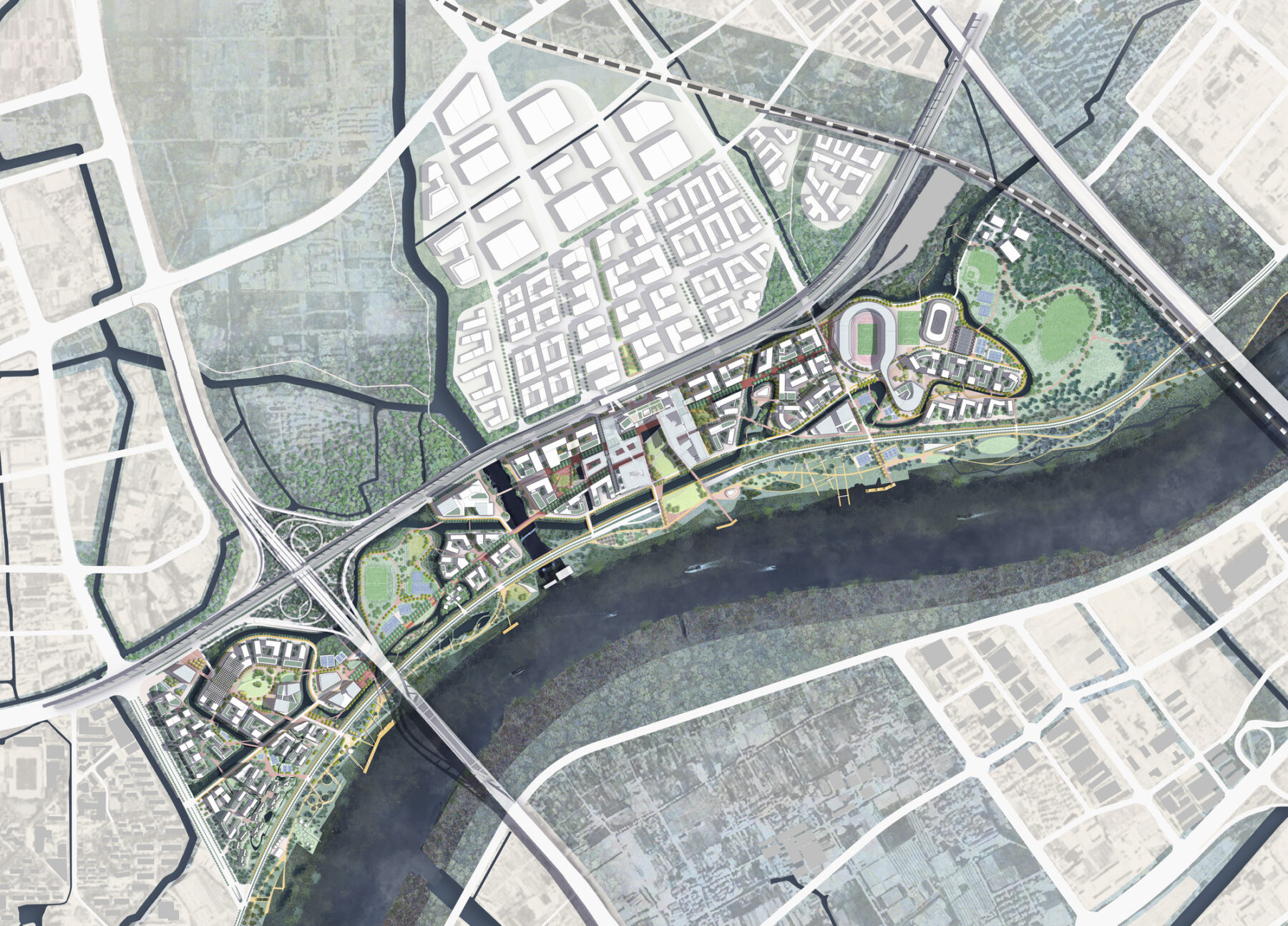
Honoring the cultural significance of the region and prioritizing sustainability, resilience, and ecology
The plan strives to restore a degraded regional hydrology and proposes a new waterway system throughout the site, drawing inspiration from Ningbo’s cultural connection to water to create a unique campus experience. The meandering pathways and various water features on the campus offer an array of waterfront experiences while providing critical ecosystem services, such as stormwater management and contiguous wetland habitat for wildlife. A new central quad anchors the campus gateway and presents a visual connection to the city’s growing skyline, the Yong River, and surrounding mountains.
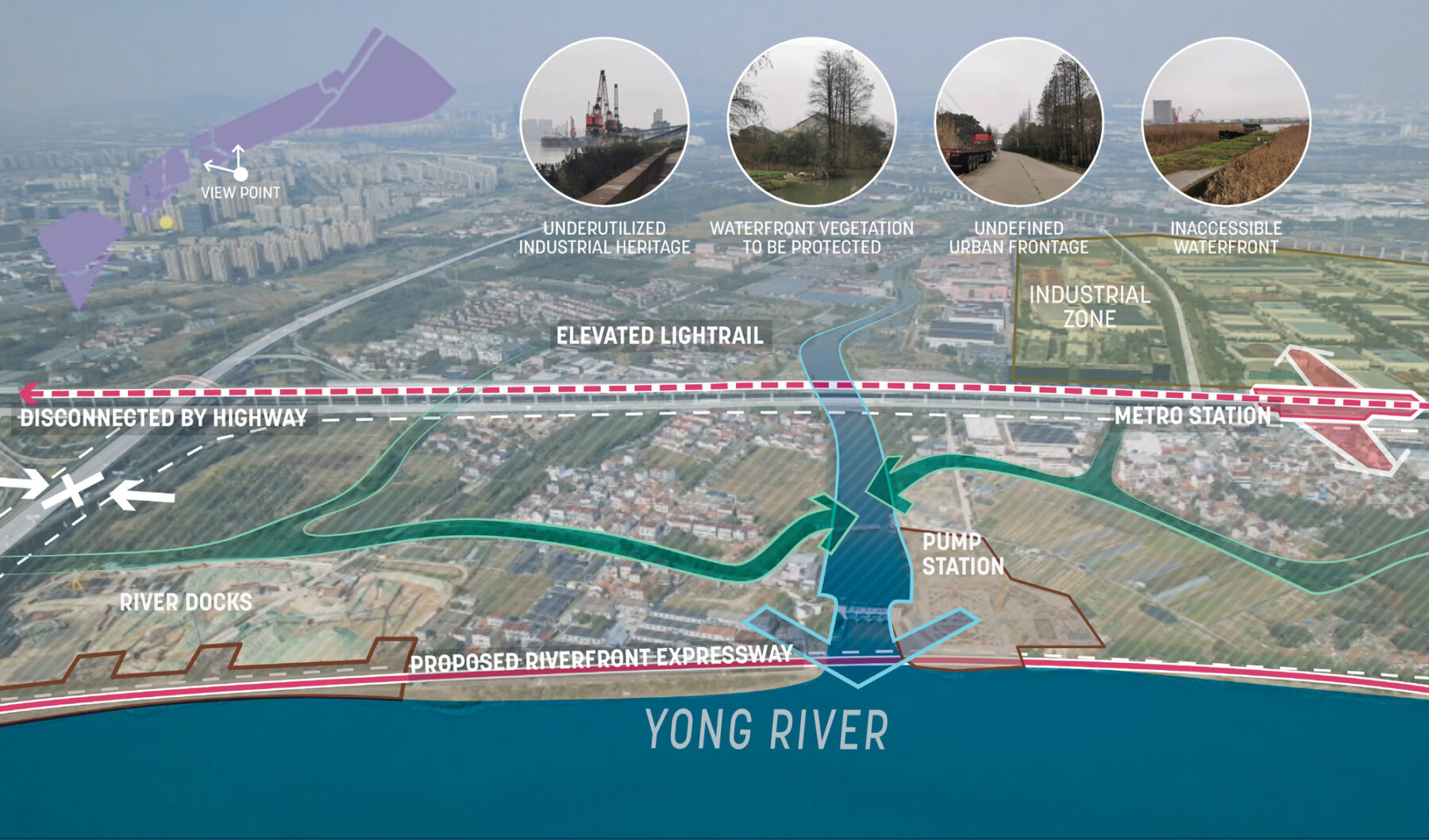
Existing site with channelized waterways and decommissioned industrial facilities
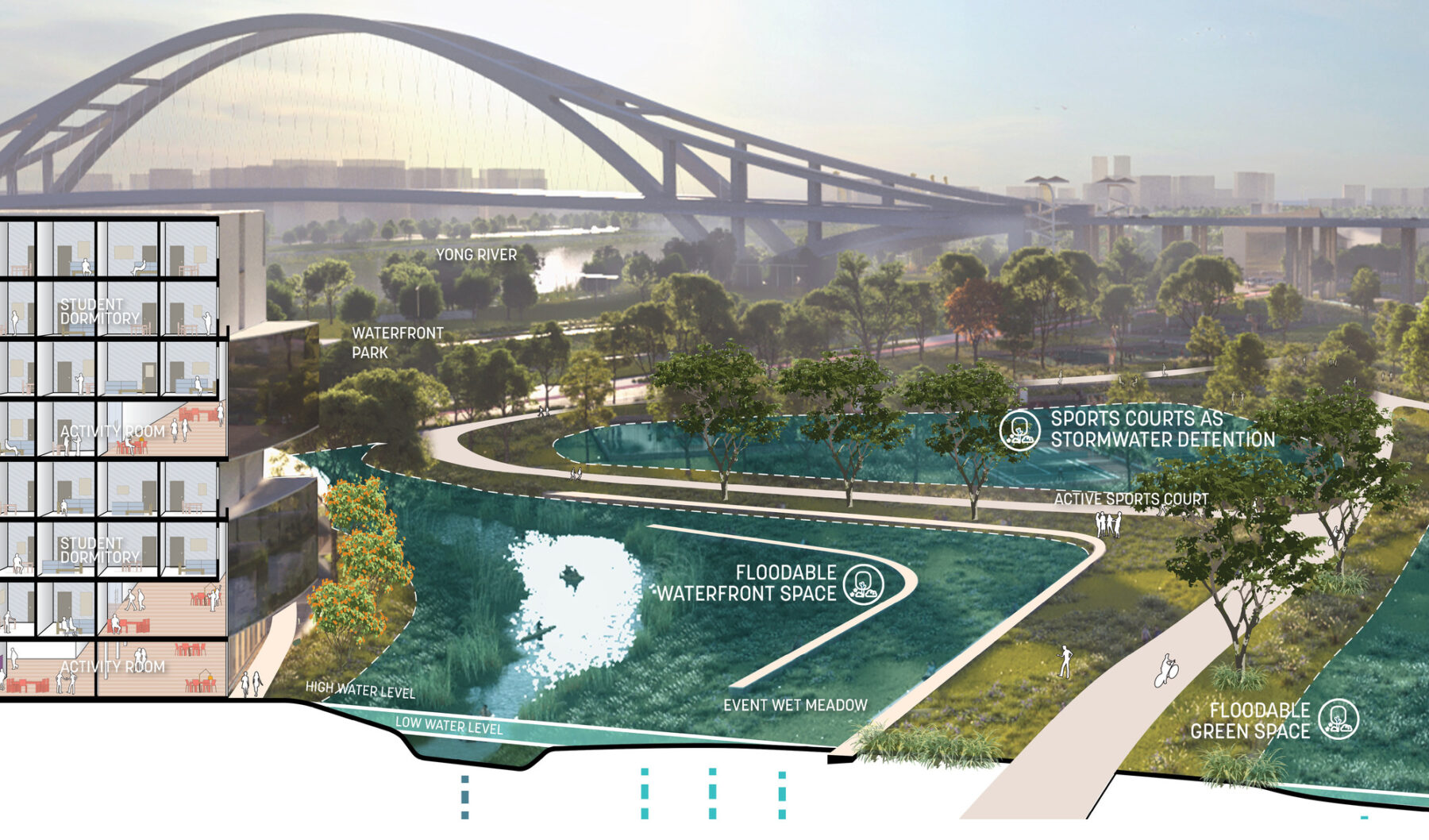
Leveraging an enhanced hydrological network to help define the established campus edges boundaries and outline open spaces within the campus
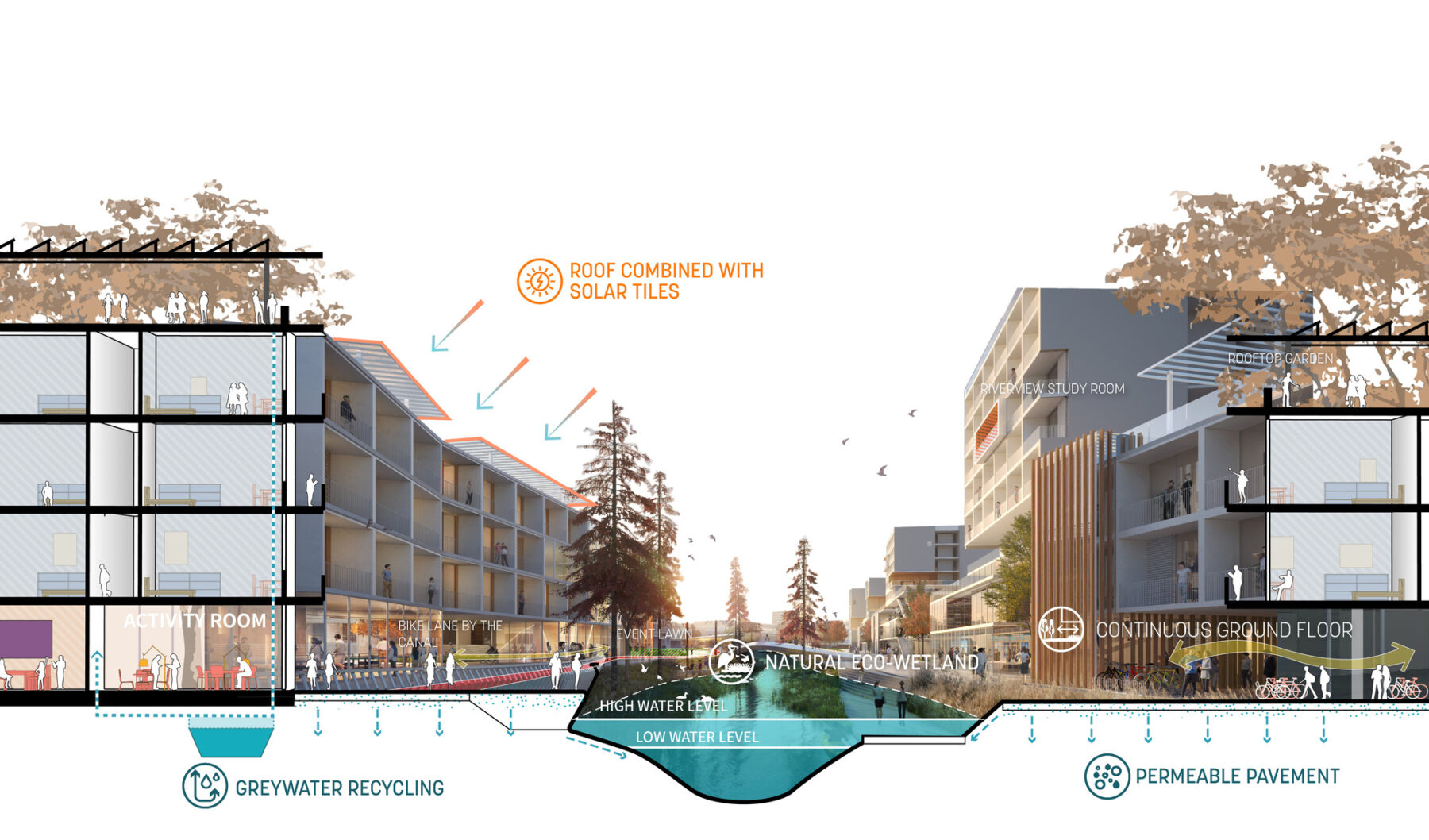
Sustainability strategies for waterfront campus housing
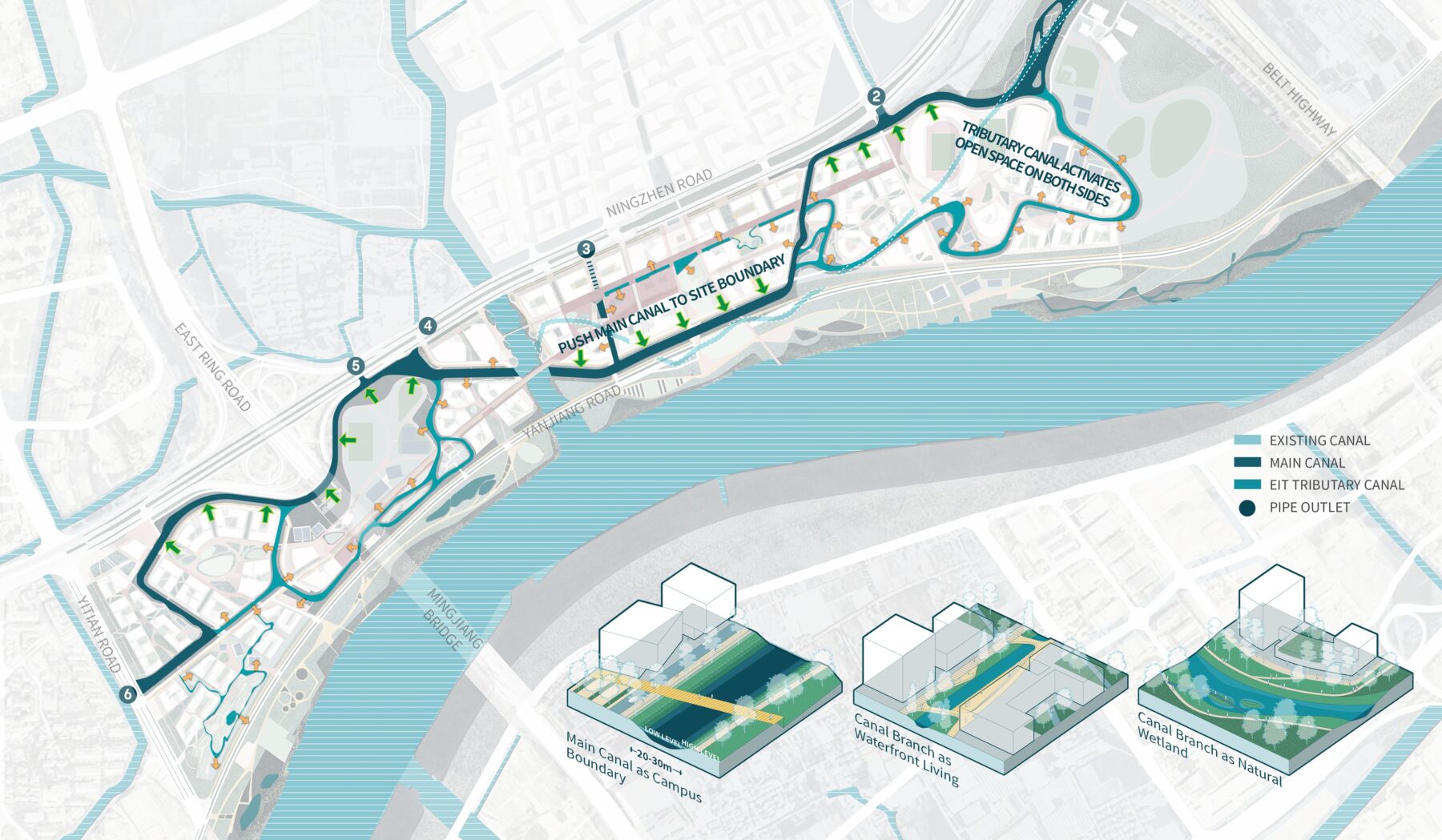
Leveraging healthy hydrology for amenities and sustainability goals
The rigorous design process actively engaged the stakeholders and school leadership to identify key challenges that need to be addressed to create a sustainable and engaging learning environment. Considering the region’s substantial annual precipitation and long rainy season, the campus plan is set to handle the long-term challenges of climate change, especially the increasing risk of inundation and extreme storm surges. The design incorporates green roofs, rain gardens, and uninterrupted hydrology to manage stormwater and create ecological amenities.
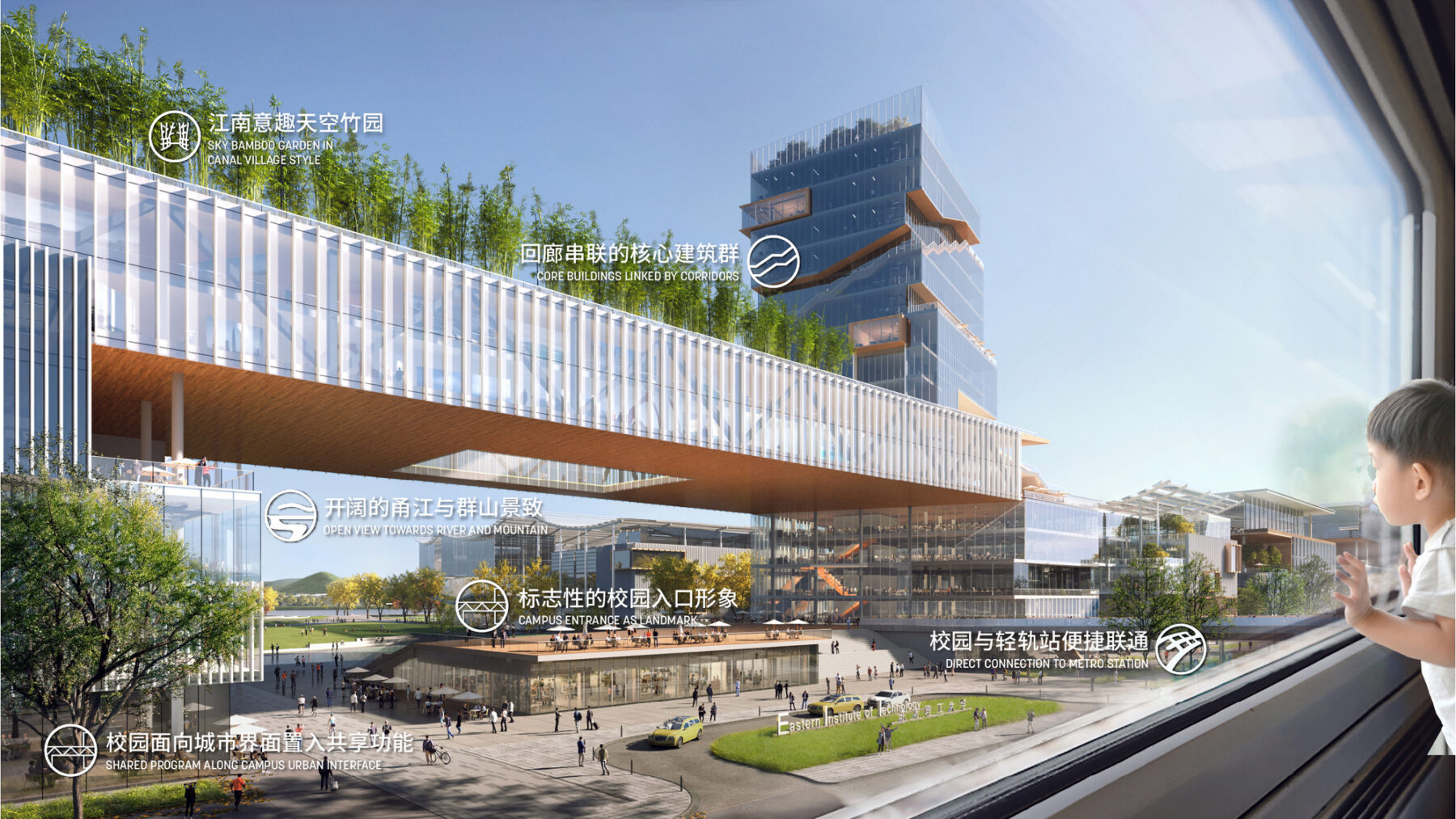
Campus access by public transit
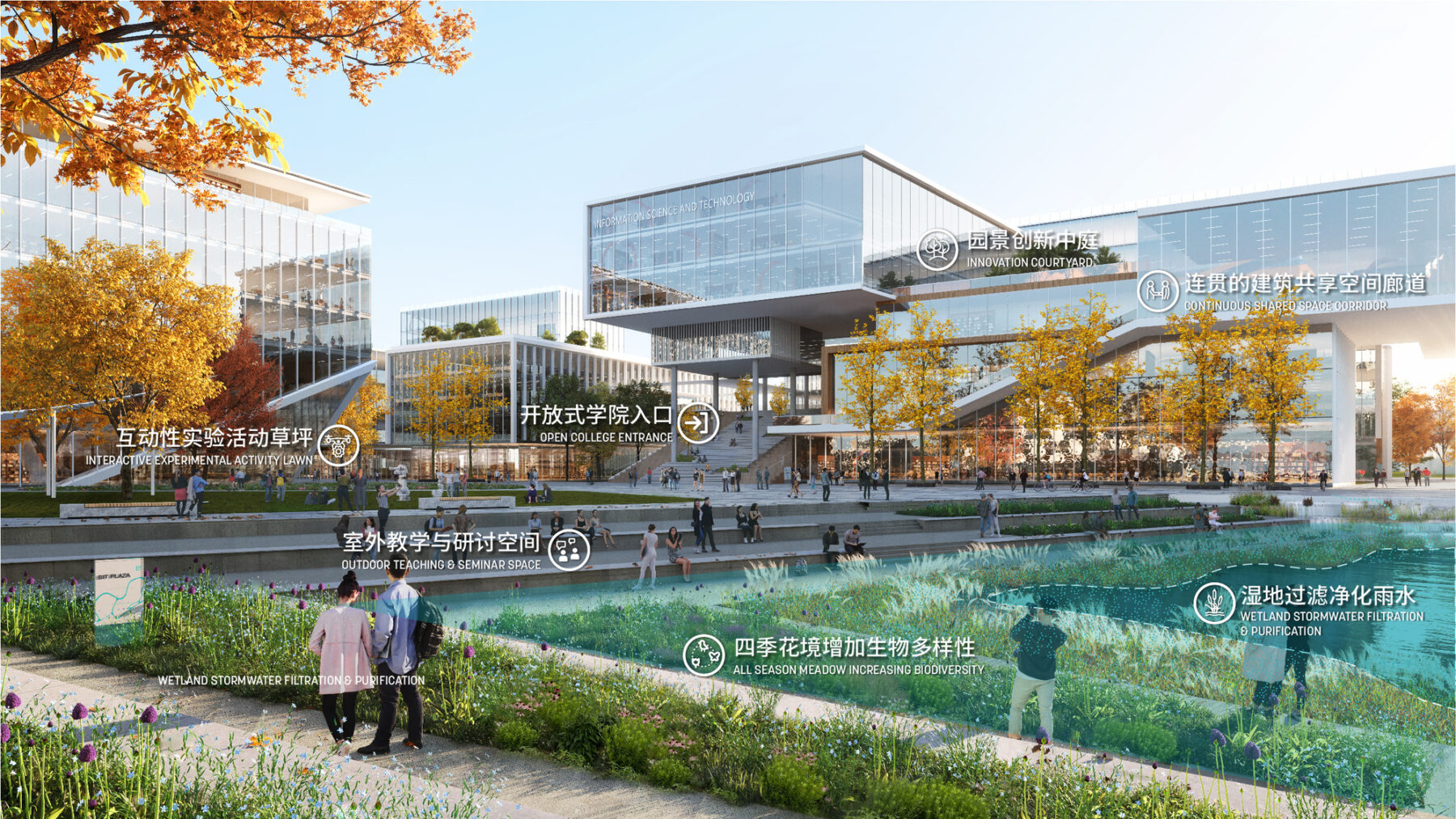
Courtyard landscapes function as a living lab for environmental education and stewardship
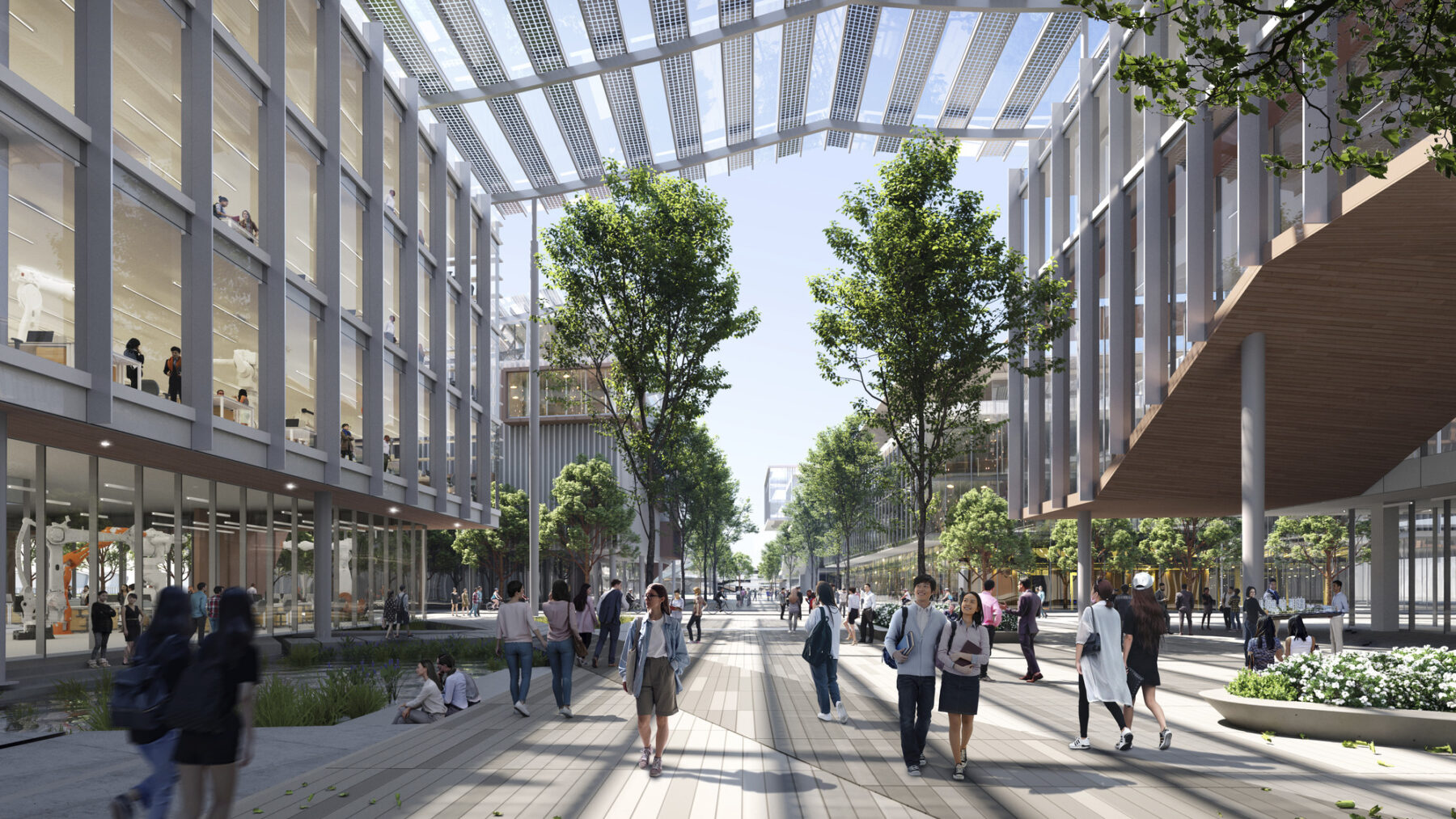
The campus spine EIT Walk with PV shade structure
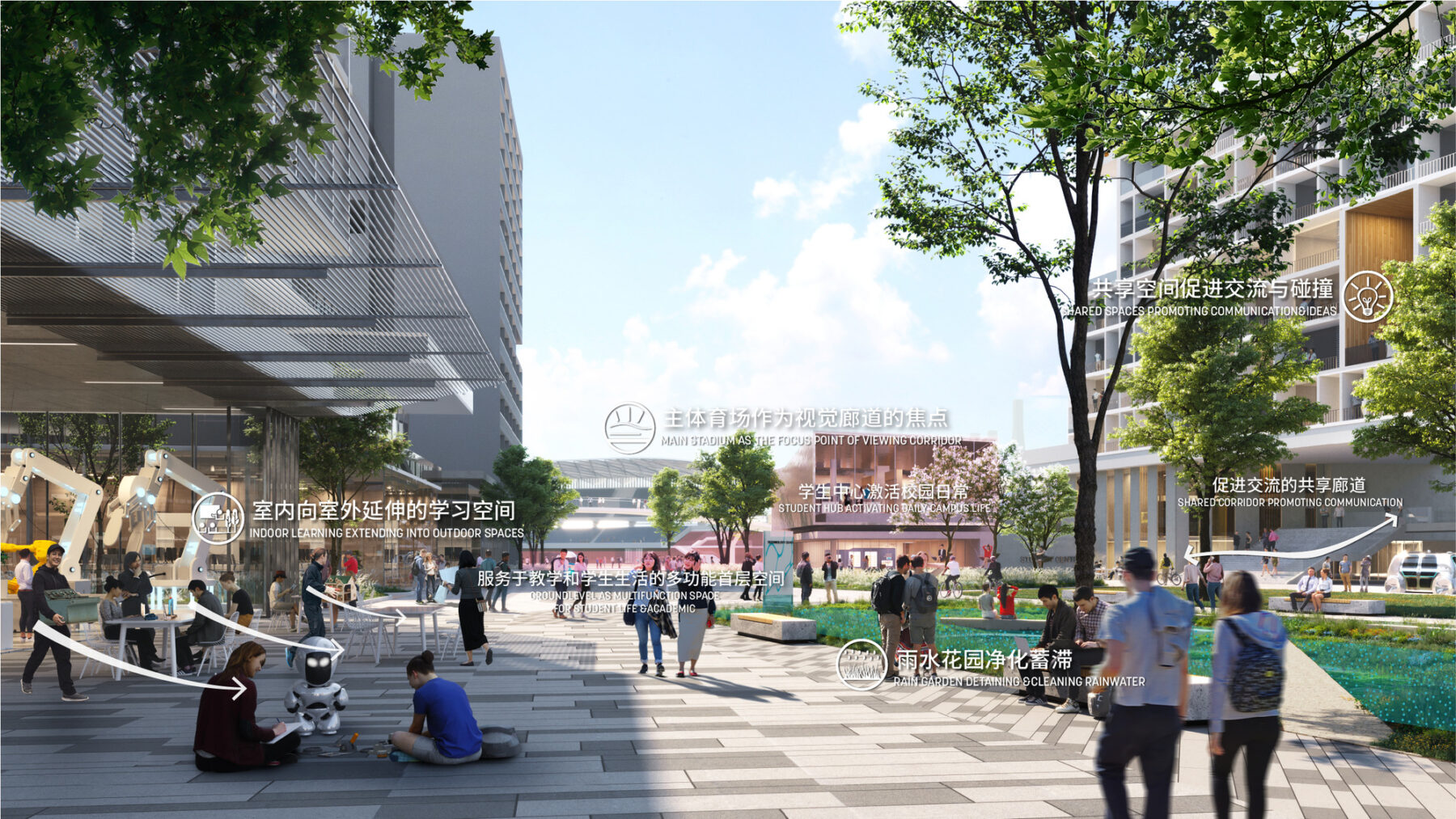
Campus landscape and rain gardens as outdoor classrooms
Campus access by public transit
Courtyard landscapes function as a living lab for environmental education and stewardship
The campus spine EIT Walk with PV shade structure
Campus landscape and rain gardens as outdoor classrooms
One of the primary challenges faced by the campus is its linear site constrained by the surrounding urban infrastructure and posing physical barriers to connections and collaboration. In response, the master plan introduces the EIT Walk, a campus-wide pedestrian promenade that connects most academic programs, campus amenities, student center, and major recreational spaces.
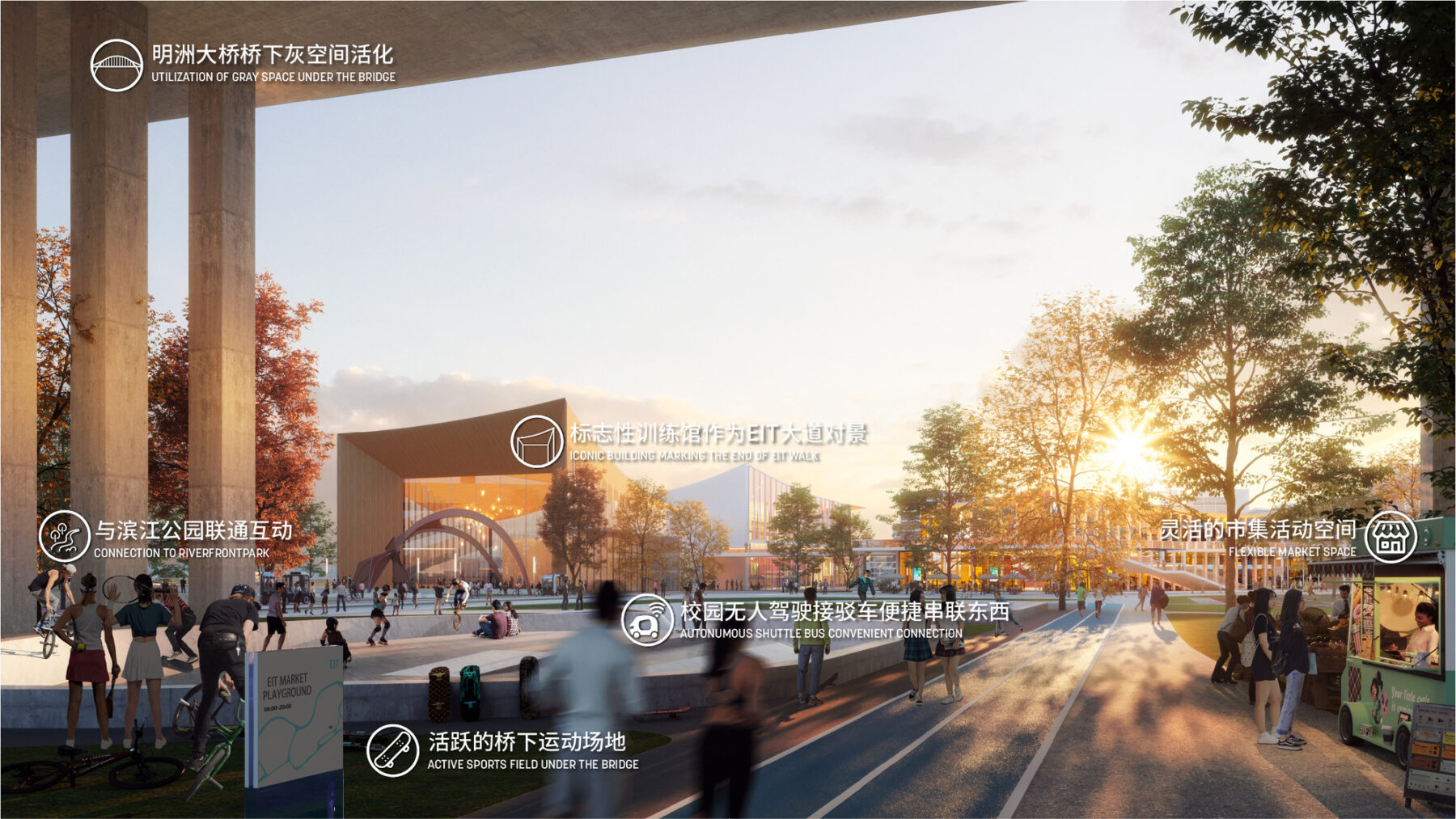
A neglected under-the-bridge space is transformed for recreation, outdoor markets, and multimodal trails
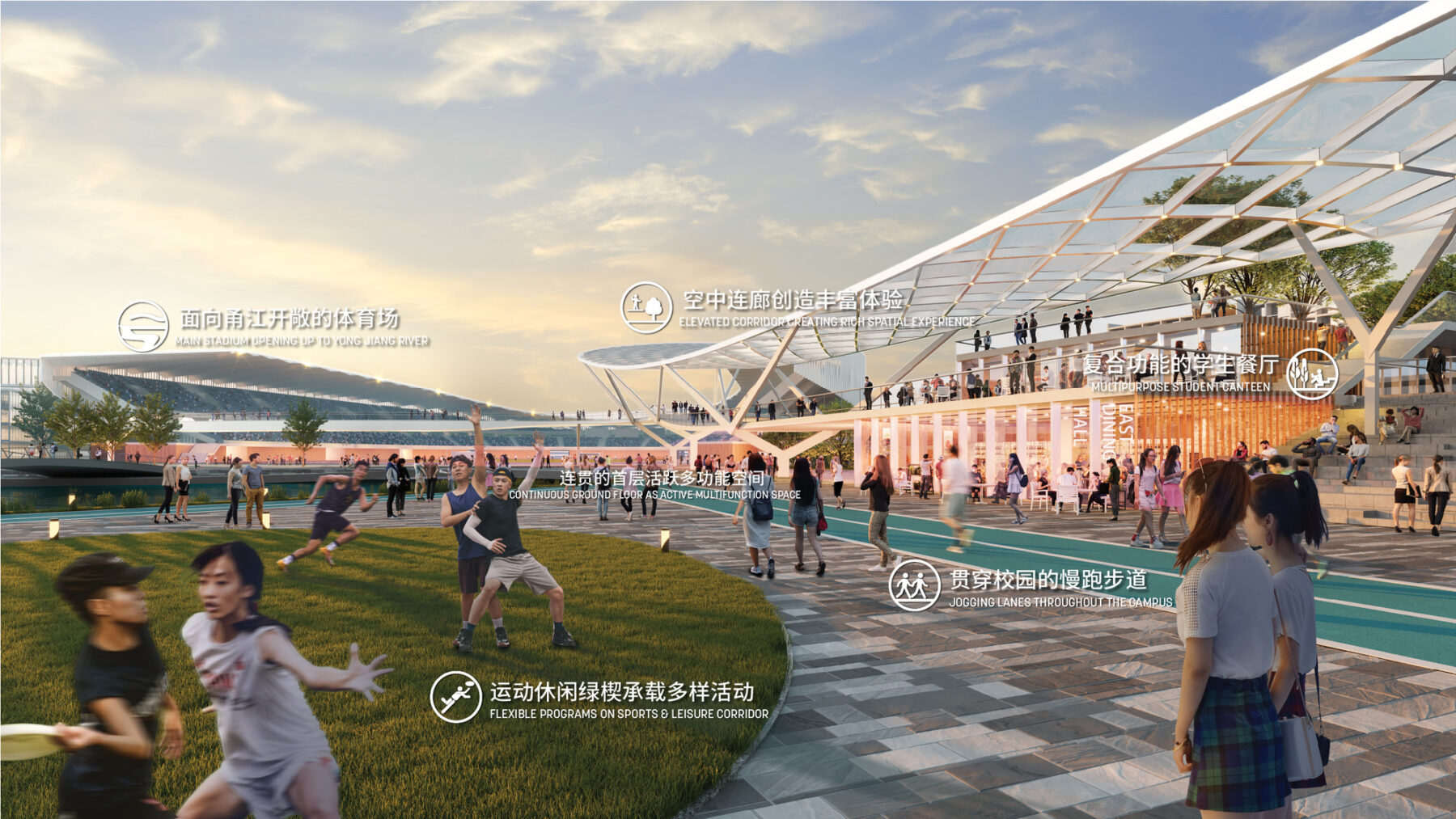
Recreational facilities integrate with campus landscape, taking advantage of the vistas to the river
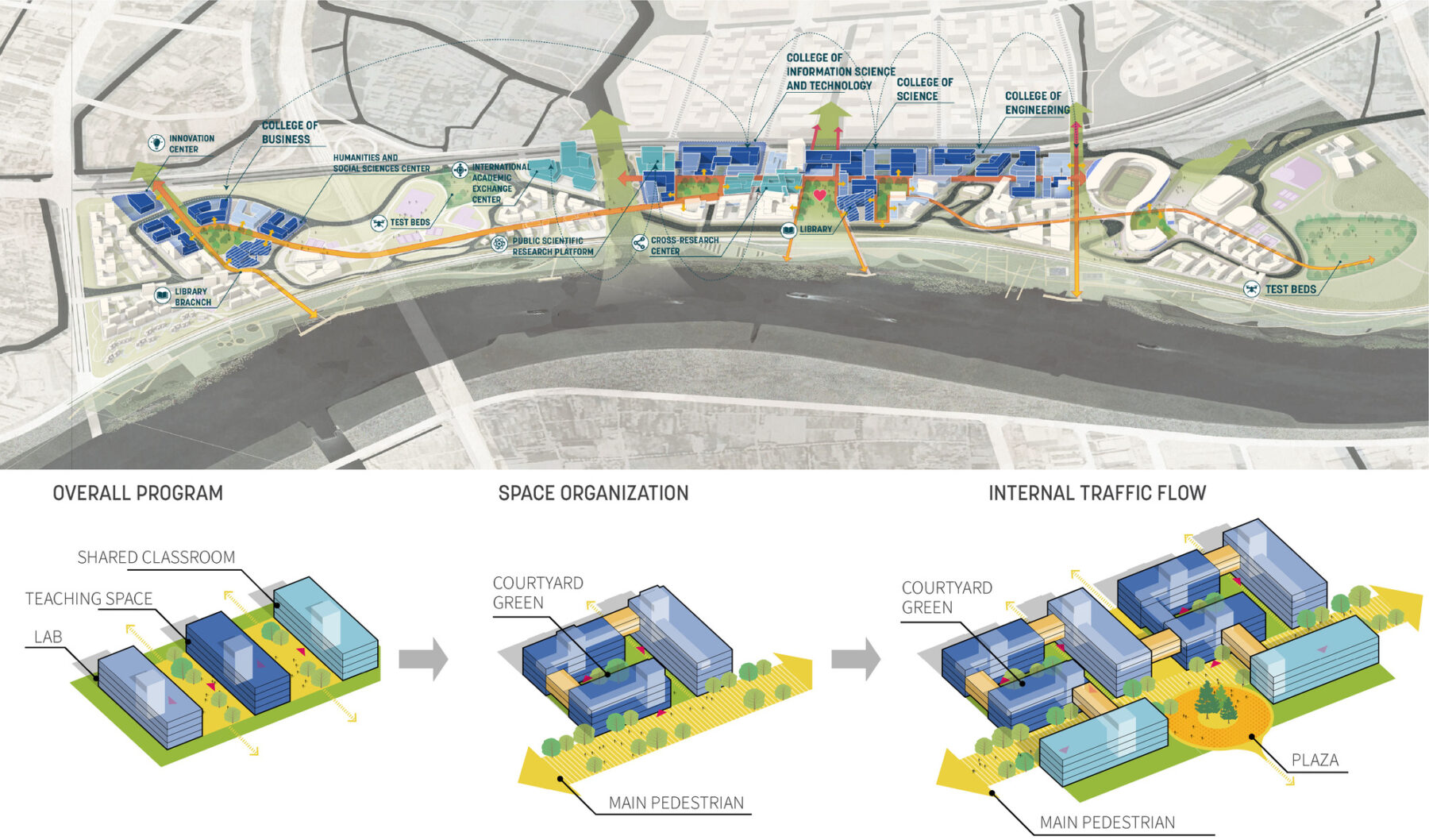
A series of academic clusters along the EIT Walk
The meandering pathways and courtyards along the EIT Walk intersect with the waterways, creating a series of social nodes that encourage students and faculty to walk, bike, or take campus transit– establishing a hierarchy of pedestrian connections.
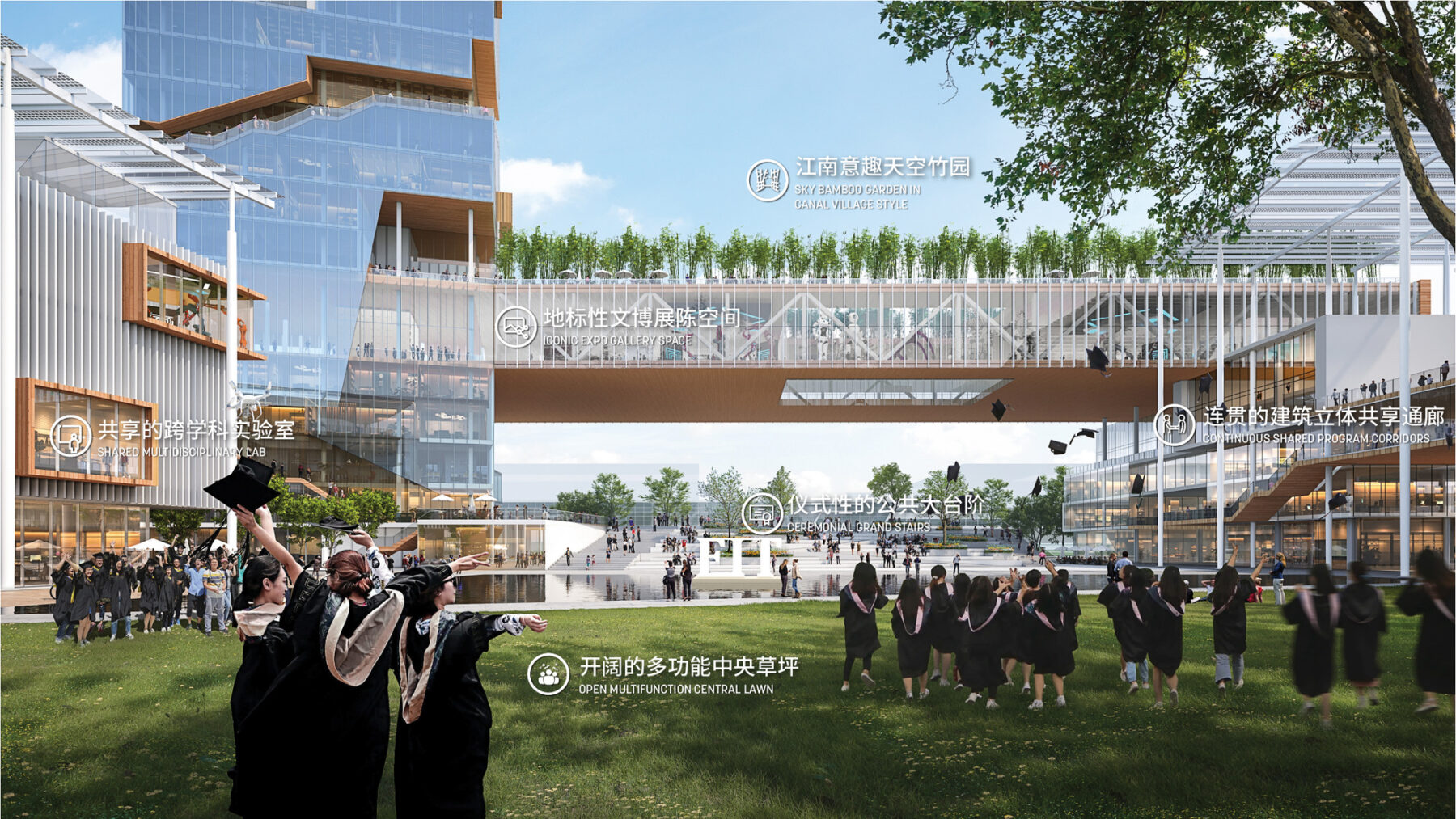
Central quad for large events and celebrations
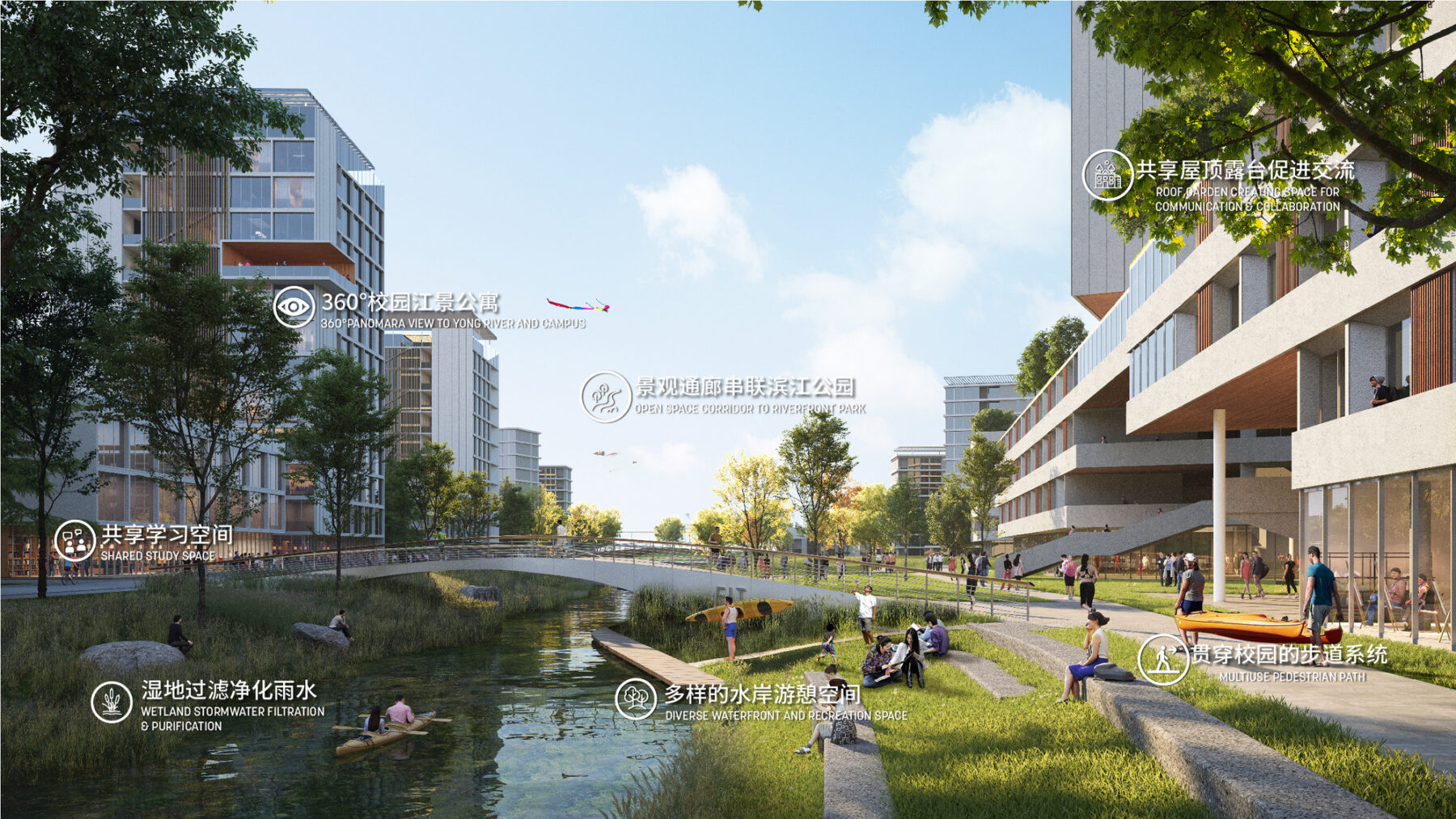
A renaissance of Ningbo’s vernacular landscape of living with the water
For more information contact Tao Zhang.